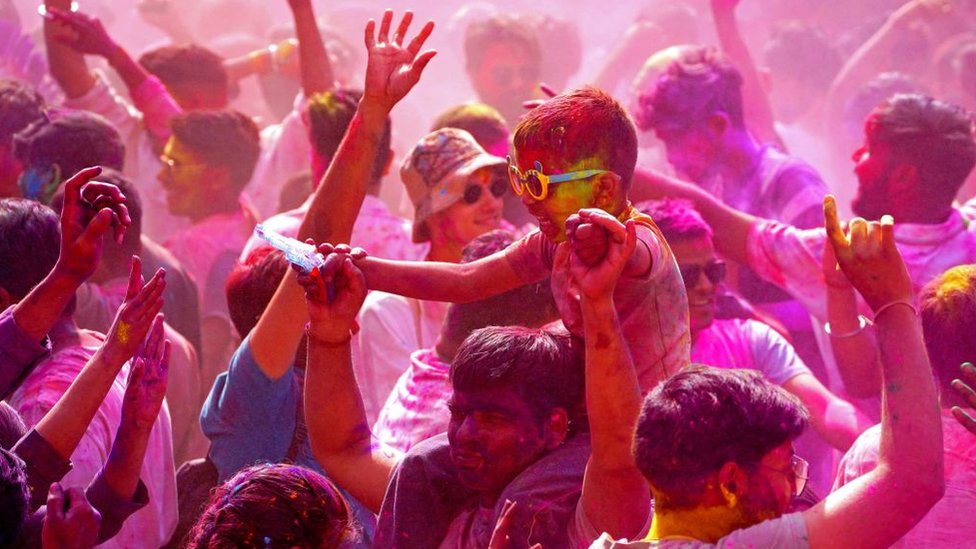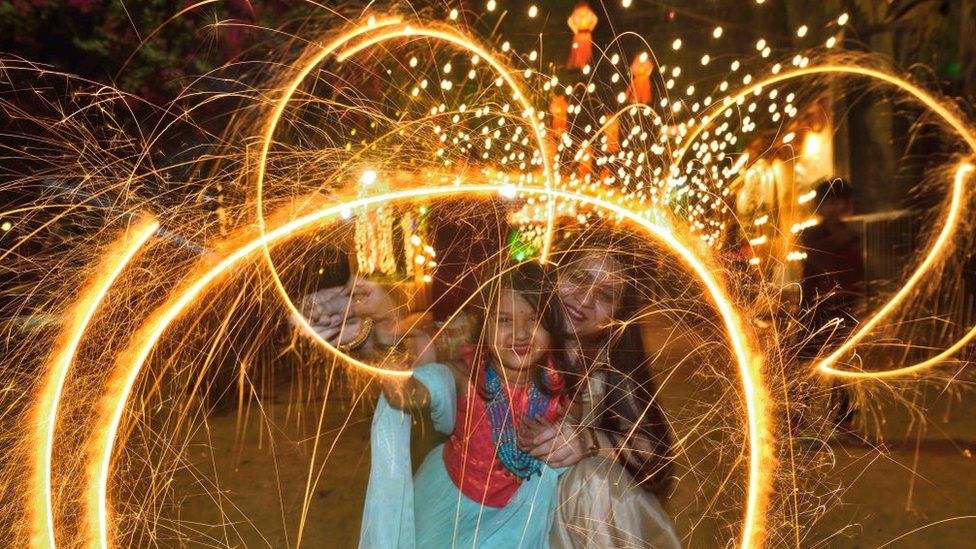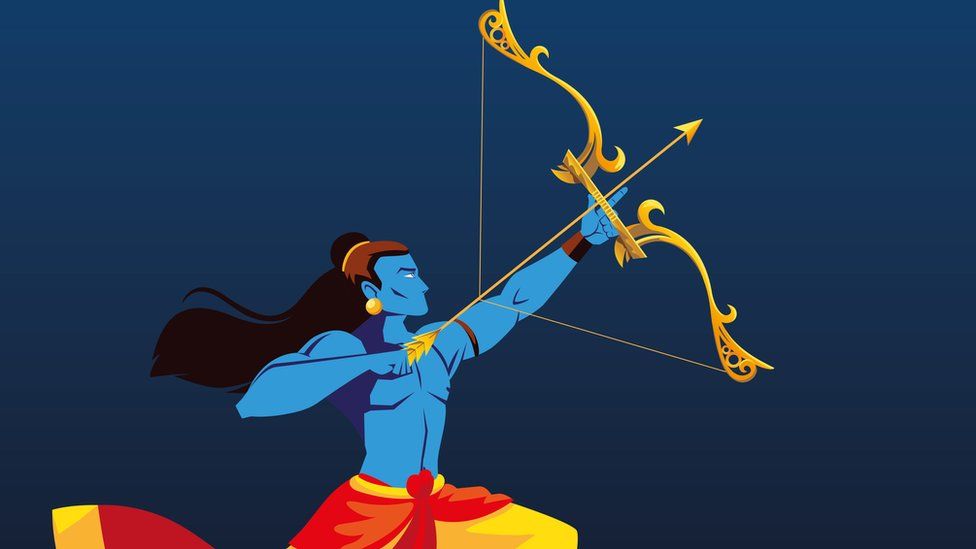HOLI
HOLI
Holi, Hindu spring festival celebrated throughout North India on the full-moon day of Phalguna (February–March). Participants throw coloured water and powders on one another, and, on this one day only, license is given for the usual rankings of caste, gender, status, and age to be reversed. In the streets the celebrations are often marked by ribald language and behaviour, but at its conclusion, when everyone bathes, dons clean white clothes, and visits friends, teachers, and relatives, the ordered patterns of society are reasserted and renewed.
Holi is particularly enjoyed by worshippers of the god Krishna. Its general frivolity is considered to be in imitation of Krishna’s play with the gopis (wives and daughters of cowherds). In Vraja (modern Gokul), rituals of reversal culminate in a battle in which the women of the natal village of Radha, Krishna’s eternally devoted lover, pummel the men of Krishna’s village with staves; the men defend themselves with shields. In the Dolayatra (“Swing Festival”), images of the gods are placed on decorated platforms and are swung to the accompaniment of cycles of songs sung only in the spring season. In many locales, celebrants kindle an early morning bonfire that represents the burning of the demoness Holika (or Holi), who was enlisted by her brother, Hiranyakashipu, in his attempt to kill his son Prahlada because of the latter’s unshakable devotion to Vishnu. The burning of Holika prompts worshippers to remember how Vishnu (in the form of a lion-man, Narasimha) attacked and killed Hiranyakashipu, vindicating both Prahlada and Vishnu.
Holika Dahan
Holi celebrations start on the night before Holi with the ritual of Holika Dahan or "Chhoti Holi" where people gather and perform religious rituals in front of a bonfire and pray that their internal evils be destroyed the way Holika, the sister of the demon king Hiranyakashipu, was killed in the fire.
On the eve of Holi, typically at or after sunset, the pyre is lit, signifying Holika Dahan. The ritual symbolises the victory of good over evil. People gather around the fire to sing and dance.
 Radha Krishna[edit]
Radha Krishna[edit]
Main article: Radha Krishna
Radha Krishna playing Holi
In the Braj region of India, where the Hindu deities Radha and Krishna grew up, the festival is celebrated until Rang Panchmi in commemoration of their divine love for each other. The festivities officially usher in spring, with Holi celebrated as a festival of love.Garga Samhita, a puranic work by Sage Garga was the first literature to mention the romantic description of Radha and Krishna playing Holi.There is also a popular symbolic legend behind the festival. In his youth, Krishna despaired whether the fair-skinned Radha would like him because of his dark skin colour. His mother Yashoda, tired of his desperation, asks him to approach Radha and ask her to colour his face in any colour she wanted. This Radha did, and Radha and Krishna became a couple. Ever since, the playful colouring of Radha and Krishna's face has been commemorated as Holi.Beyond India, these legends help to explain the significance of Holi (Phagwah) common in some Caribbean communities of Indian origin such as Guyana, Suriname, and Trinidad and Tobago.It is also celebrated with great fervour in Mauritius, Fiji, and South Africa.

.jpg&ehk=AOfxu4LnFfjkQ250u%2fZnpLu4KvU%2bLegEpVvnUc7qAJk%3d&risl=&pid=ImgRaw&r=0)








Comments
Post a Comment